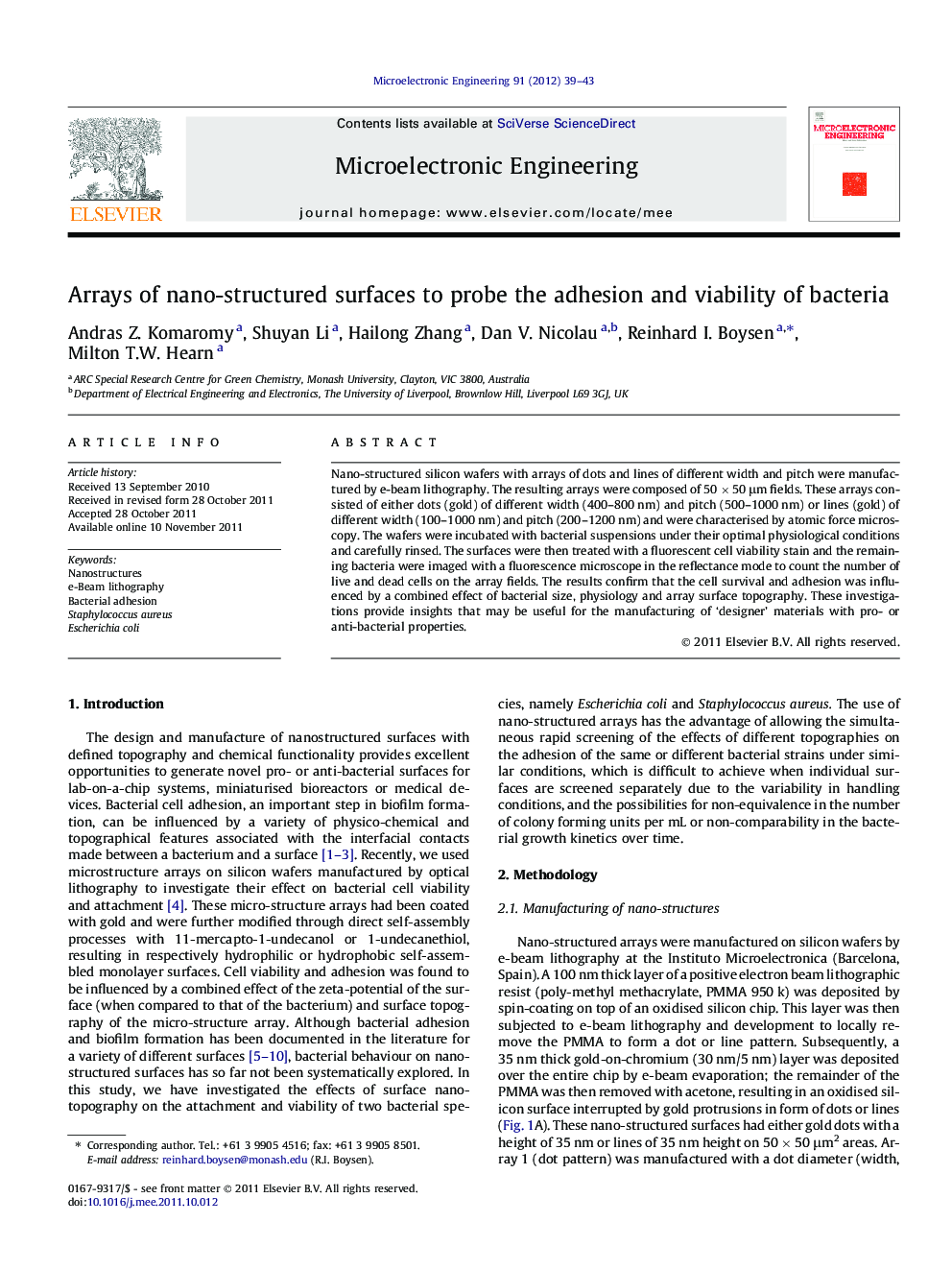| Article ID | Journal | Published Year | Pages | File Type |
|---|---|---|---|---|
| 540310 | Microelectronic Engineering | 2012 | 5 Pages |
Nano-structured silicon wafers with arrays of dots and lines of different width and pitch were manufactured by e-beam lithography. The resulting arrays were composed of 50 × 50 μm fields. These arrays consisted of either dots (gold) of different width (400–800 nm) and pitch (500–1000 nm) or lines (gold) of different width (100–1000 nm) and pitch (200–1200 nm) and were characterised by atomic force microscopy. The wafers were incubated with bacterial suspensions under their optimal physiological conditions and carefully rinsed. The surfaces were then treated with a fluorescent cell viability stain and the remaining bacteria were imaged with a fluorescence microscope in the reflectance mode to count the number of live and dead cells on the array fields. The results confirm that the cell survival and adhesion was influenced by a combined effect of bacterial size, physiology and array surface topography. These investigations provide insights that may be useful for the manufacturing of ‘designer’ materials with pro- or anti-bacterial properties.
Graphical abstractFigure optionsDownload full-size imageDownload as PowerPoint slideHighlights► Nanostructured surfaces were produced by e-beam lithography and characterised by AFM. ► The Au-on-SiO dot or line arrays were incubated with Escherichia coli and Staphylococcus aureus cells. ► Surface-adhered cells were subjected to a fluorescent cell viability stain. ► Live and dead cells were counted using a fluorescence microscope. ► Cell adhesion was influenced by bacterial size, physiology and surface topography.
